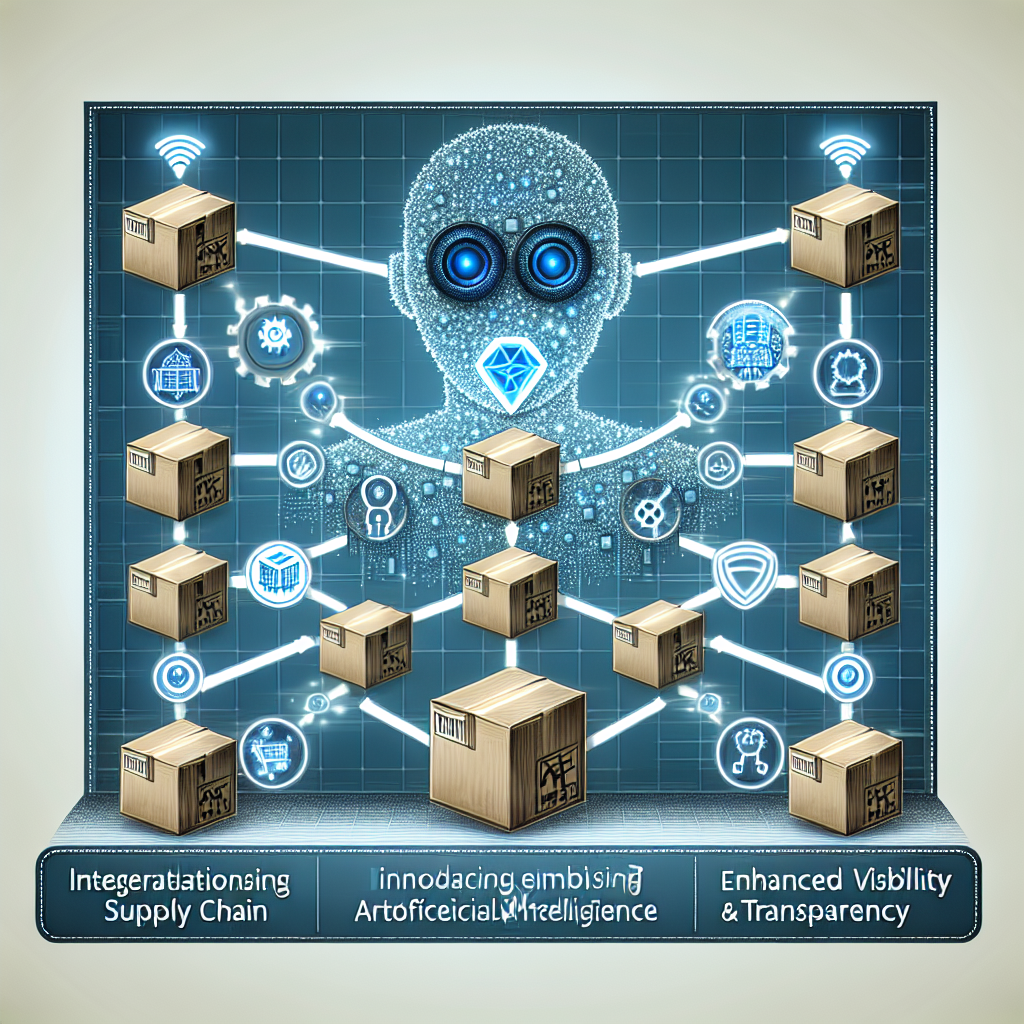Artificial Intelligence (AI) has become a game-changer in various industries, and the supply chain sector is no exception. In recent years, AI technology has been increasingly adopted by companies to enhance supply chain visibility and transparency. This article will explore the role of AI in improving supply chain operations, how it enhances visibility and transparency, and address some frequently asked questions about this topic.
The Role of AI in Supply Chain Visibility and Transparency
Supply chain visibility refers to the ability of a company to track and monitor its products and materials as they move through the supply chain. Transparency, on the other hand, refers to the openness and accessibility of information related to the supply chain operations. Both visibility and transparency are crucial for companies to effectively manage their supply chains, reduce risks, and improve operational efficiency.
AI plays a significant role in enhancing supply chain visibility and transparency in several ways:
1. Predictive Analytics: AI algorithms can analyze large volumes of data from various sources to predict demand, identify potential disruptions, and optimize inventory levels. By using predictive analytics, companies can make more informed decisions and proactively address issues before they escalate.
2. Real-time Tracking: AI-powered tracking systems can provide real-time visibility into the movement of products and materials across the supply chain. This enables companies to monitor the status of shipments, identify bottlenecks, and track the location of goods at any given time.
3. Supply Chain Optimization: AI algorithms can optimize supply chain operations by identifying inefficiencies, recommending the best routes, and optimizing inventory levels. By automating these processes, companies can reduce costs, improve delivery times, and enhance overall supply chain performance.
4. Risk Management: AI can help companies identify and mitigate risks in the supply chain, such as supplier disruptions, quality issues, or compliance violations. By analyzing data from various sources, AI algorithms can flag potential risks and enable companies to take proactive measures to mitigate them.
5. Enhanced Collaboration: AI-powered platforms can facilitate collaboration among supply chain partners by providing a centralized platform for sharing information, communicating in real-time, and making data-driven decisions. This improves transparency and visibility across the supply chain, leading to better coordination and efficiency.
6. Sustainability and Ethical Sourcing: AI can help companies track and monitor the sustainability and ethical sourcing practices of their suppliers. By analyzing data related to environmental impact, labor practices, and compliance with regulations, companies can ensure that their supply chains are ethical and sustainable.
FAQs about AI in Supply Chain Visibility and Transparency
Q: How can AI help companies improve supply chain visibility?
A: AI can help companies improve supply chain visibility by providing real-time tracking of products and materials, analyzing data to predict demand and identify potential disruptions, and optimizing supply chain operations to enhance efficiency.
Q: What are some of the challenges of implementing AI in the supply chain?
A: Some of the challenges of implementing AI in the supply chain include data integration, lack of skilled personnel, resistance to change, and concerns about data privacy and security.
Q: How can companies ensure the ethical use of AI in the supply chain?
A: Companies can ensure the ethical use of AI in the supply chain by establishing clear guidelines for data usage, ensuring transparency in AI algorithms, and incorporating ethical considerations into decision-making processes.
Q: What are some examples of AI applications in supply chain visibility and transparency?
A: Some examples of AI applications in supply chain visibility and transparency include predictive analytics for demand forecasting, real-time tracking of shipments, optimization of inventory levels, risk management, and sustainability monitoring.
Q: How can companies measure the impact of AI on supply chain visibility and transparency?
A: Companies can measure the impact of AI on supply chain visibility and transparency by tracking key performance indicators such as on-time delivery rates, inventory turnover, cost savings, and customer satisfaction levels.
In conclusion, AI has a transformative impact on supply chain visibility and transparency by enabling companies to track and monitor their products, optimize operations, mitigate risks, and enhance collaboration with supply chain partners. By leveraging AI technology, companies can improve efficiency, reduce costs, and ensure ethical and sustainable practices in their supply chains. As AI continues to evolve, its role in supply chain management will become even more critical in driving innovation and competitiveness in the global marketplace.

